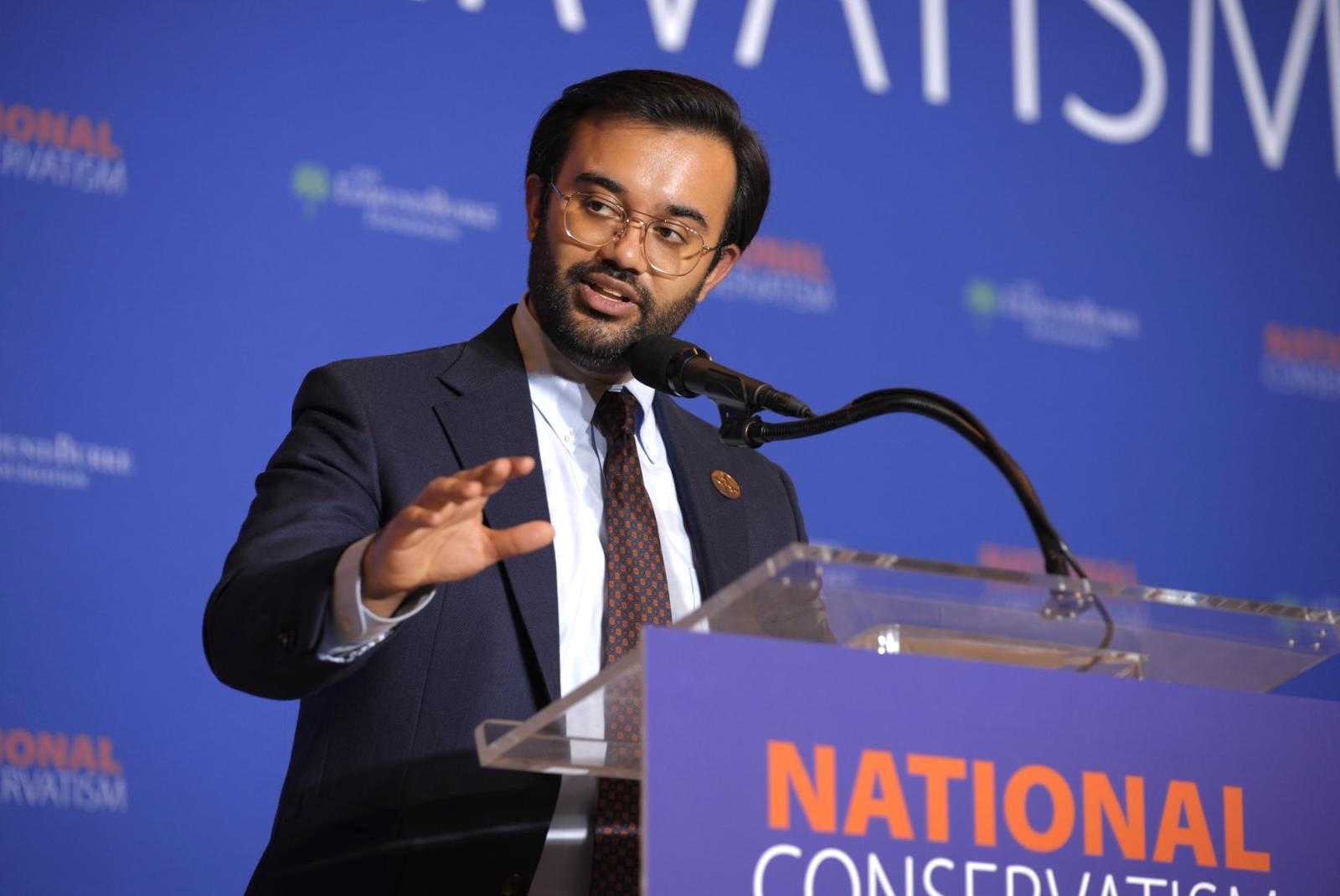
www.theamericanconservative.com
The Intellectuals De-intellectualizing the American Right
Politics
The Intellectuals De-intellectualizing the American Right
NatCon 4 found the movement hungry and oriented toward results.
Days before the news cycle was broken with an attempted assassination, a few blocks away from the White House, on the second floor of the Capital Hilton, Heritage Foundation’s president Kevin Roberts called this year’s National Conservatism Conference (NatCon 4) “the most important gathering of conservatives in the twenty-first century.”
While that may sound overly gracious, he has a point. And after Senator J.D. Vance’s selection, a good friend of Roberts, as Donald Trump’s running mate, it sounds less gracious; it sounds like reality. The “vibes” have shifted toward this wing of conservatism—“national conservatism.”
Much has and will be written about how the confab was just thrown for “young, white and clean-scrubbed” weirdos. This, of course, is obfuscation. Yes, there was a chunk of oddballs—as at any political conference, but compared to any major right-wing gathering, the crowd included folks that were quite—normal. Some of the liberal journalists there spent more time trying to doxx than trying to learn (a key to reporting well, I’ve been told). If they had taken some time to do that, however, they might have reached different conclusions—made some friends, even.
NatCon was no CPAC. The high-schoolers were absent; the boomers were rich; no one loves Sean Hannity. What you had instead were scholars, former White House staffers, senators and students of some of the most prestigious institutions in this country.
Though one would expect such a crowd to spend their three days in the capital rigorously discussing complex ideas (and they did some of that), most attendees were already intimately aware of the ideas animating the movement—a desire to lower immigration, a rethinking of the small-government-rocks consensus, a more prudent “realist” foreign policy. In fact, maybe because many attendees were friends, the air of pompousness one would feel at the average DC event wasn’t quite there.
Understanding this is key to grasp this year’s NatCon, which attracted less Twitter users and more policy wonks. The crowd might have been cerebral (with guests like historian Paul Gottfried and national security expert Elbridge Colby), yet, interestingly, most guests talked about matters of the heart.
Love, not ideas, was the leitmotif of the convention; calls for action, not reflection, characterized it. Understanding this, I believe, will be key to grasp the still-adjusting modern Republican politics, as major figures double-down on pro-labor, anti-globalist, nationalistic messaging.
This burgeoning movement—while their first conference with a lonely Senator Josh Hawley (R-MO), this one had seven senators—is composed of people who would rather call themselves strategists than ideologues. Mirroring Trump to some degree, they spend their time formulating a philosophy of winning, not one of merely existing.
One great example of this was Trump senior advisor Stephen Miller’s speech, which surely terrorized the reporter sitting to my right. “A movement of the heart is the big thing to understand [national conservatism],” he said, repeating the phrase “movement of the heart” throughout his speech. “Academics, analysis, statistics these are instruments, right? These are tools, right?,” he asked to the cheers of many academics, analysts and statisticians. “You do not build a political party around a calculator…. A political party is built around feelings, hopes, dreams, aspirations, desires,” Miller added. “The human heart is the center of American politics.”
Like Miller, Hawley also kept things romantic. Opening his speech with allusions to the Roman Empire, the senator talked about how for Augustine “the secret to this new [post-Rome] order is love.”
“[Love] contained the whole of his political science,” he explained. “Every person, he said, is defined by what he loves, every society is driven by what it loves. A nation is in fact nothing other than, to quote Augustine, ‘a multitude of rational creatures associated in a common agreement as to the things which they love.’”
Vance, the crowd’s favorite and, in mere days, the Republicans’ vice-presidential nominee, dedicated his speech to rejecting the concept of America as an idea, criticizing the notion of a “creedal nation.”
“Though we were founded on great ideas, America is a nation,” he argued.
“People don’t go and die for an idea. They go and die for a home, for their family,” the senator said. It is this perspective, this nationalism, that makes Vance uniquely popular with the crowd. “Trump is going to need a successor,” Lucca Ruggieri, an economics student at Columbia University commented on Vance’s future trajectory at the time.
Keeping with the theme, Saurabh Sharma, the conference’s executive director, began his speech with an anecdote about how a State Department friend of his used to tell him that “sociology always beats ideology.” In his eyes, friendship, not mere beliefs, are what should define this movement. He extended this framework to the international level, saying that conservatives must “build a nationalist international”—a project that is well under way with Ram Madhav, who served as the national general secretary of India’s Bharatiya Janata Party, inviting NatCon to his country in his speech.
The list of examples goes on, with national conservatives emphasizing the “national” more than the “conservatism”—an attachment that supersedes ideology, even reason. A few “NatCons” don’t even like the label “conservative” anymore. “What is left to conserve? We must restore!” they tell themselves. But, in keeping with being practical, most still embrace the label.
For those who take politics seriously, which by extension should think about this movement earnestly, national conservatism must first be assessed as a result of prioritization. In the policy sphere that means lots of things, be it prioritizing China à la Elbridge Colby or prioritizing re-industrialization like Hawley. More importantly, however: If anything became clear in the three-day conference, it is that national conservatism is mostly about reprioritizing the heart.
In making an intellectual argument for some anti-intellectualization, which may sound counterintuitive, these thinkers intend to dispense with the overtly theoretical frameworks of the last century. Mocking neoconservatives’ primacism, libertarians’ market fundamentalism, and all those who have conserved the tools that failed to conserve the nation, national conservatives stand ready to take over politics. Call it revolution, call it vengeance, but they are organizing. And this chaotic political week suggests that they are already winning.
The post The Intellectuals De-intellectualizing the American Right appeared first on The American Conservative.

















